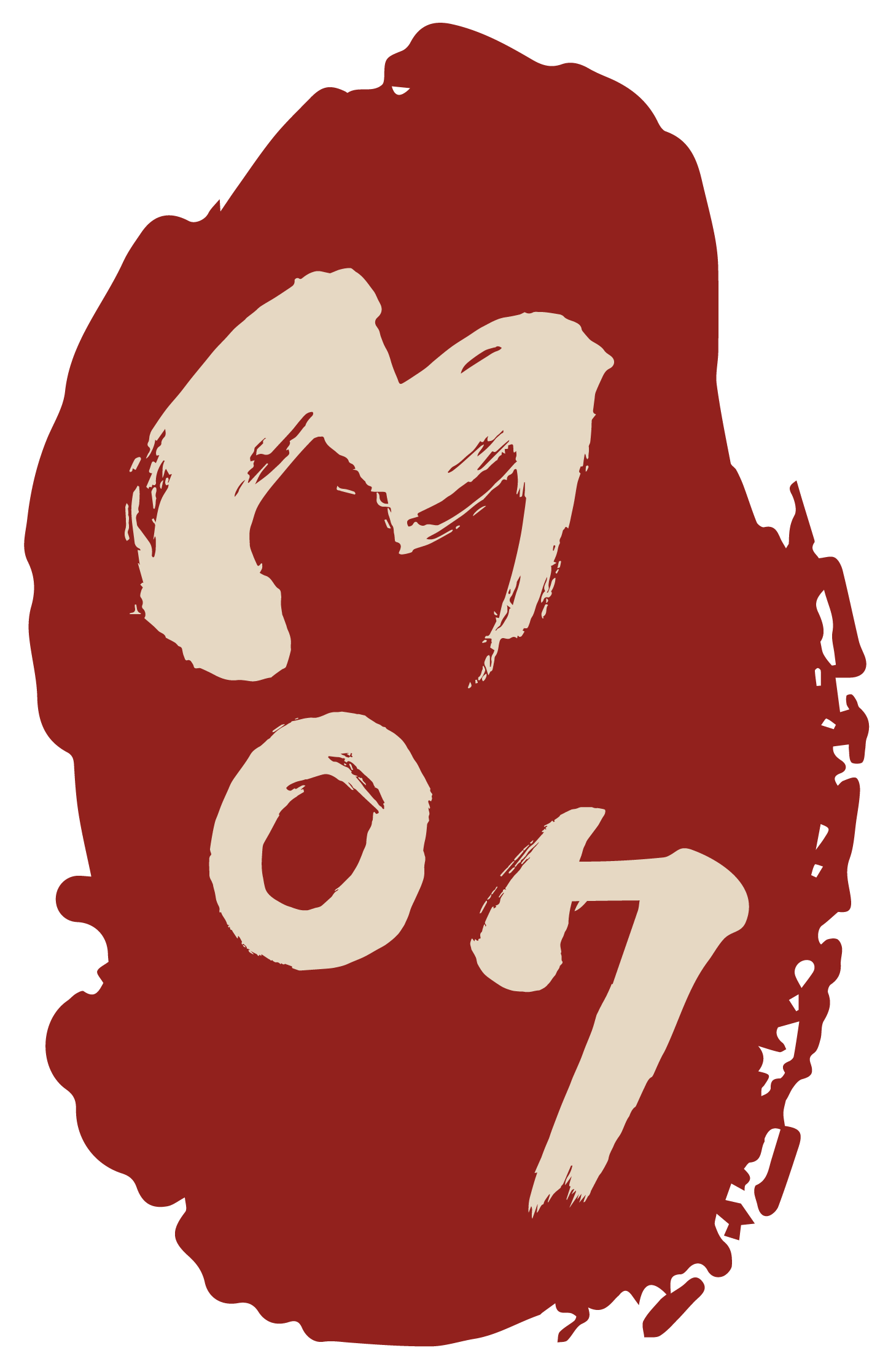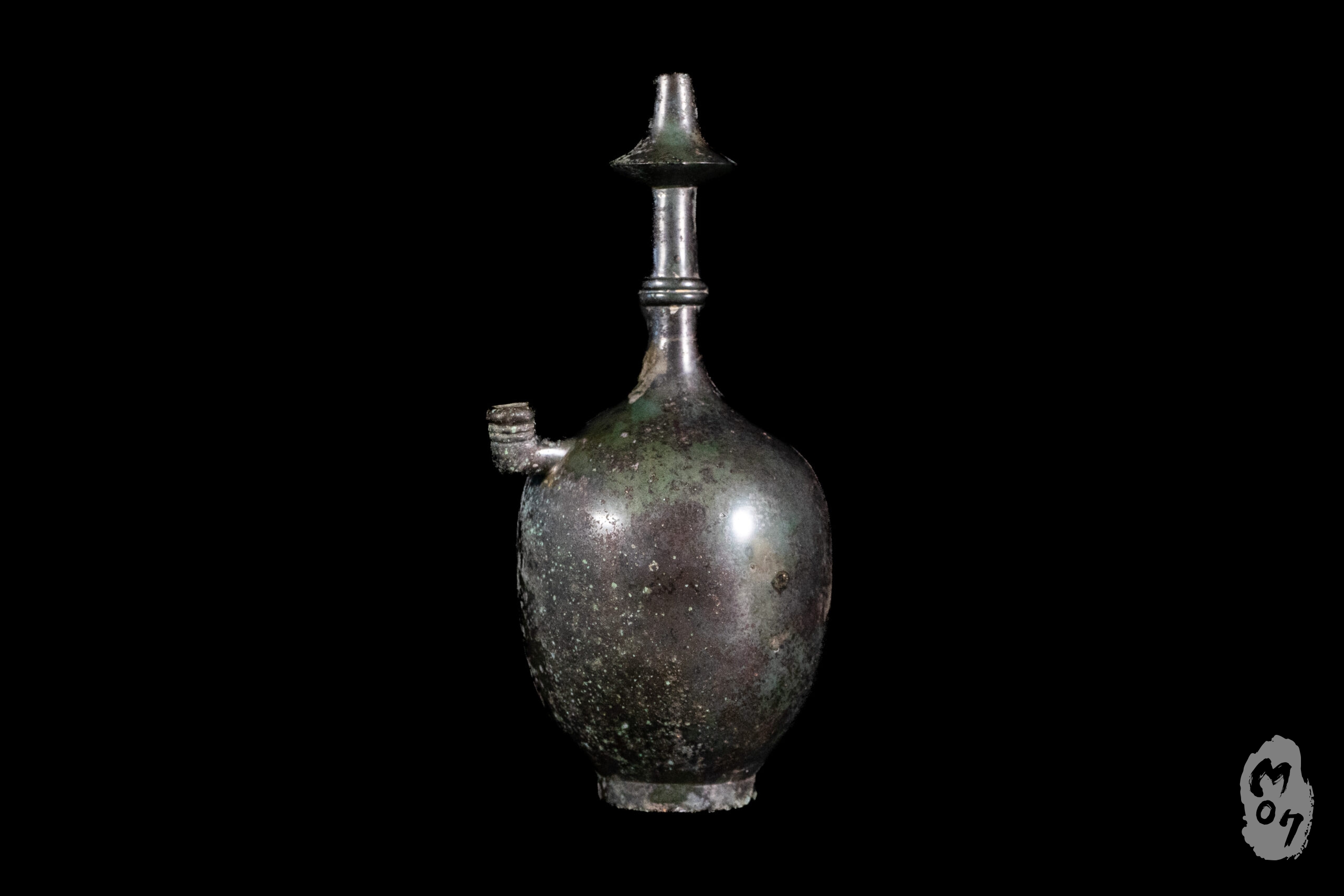Kundika in Bronze Look
Kundika
Classic form of a Kundika that was originally a drinking vessel for a monk and served Buddhist rituals. Curved silhouette with a standring. A vertically rising filler neck on the shoulder. Set up spout with a handle ring and a formed grommet with small opening. Bottom unglazed. One of the earlier examples because of missing decoration. Packed in a wooden box.
Object ID
Korea_006
Age
Koryō Period, 918 – 1392 AD
Material
Bronze (?)
Color
bronze / green, iridescent
Height
19.8 cm
Height (neck)
9 cm
Height (standfoot)
0.9 cm
Diameter (bottom)
4.2 cm
Foller neck
2 cm
Condition
Good
Price
on request
Description
The Kundika is the drinking bottle for an Indian Buddhist monk. Above that it served Buddhist rituals like the purification ceremony. The curved body-shape has a standring. The upper end is followed by a long narrow spout. There is a formed grommet with a handle ring and a small opening on the top. The body of the bottle has an iridescent bronze/green/brownish glaze and tiny air bubbles, the bottom is unglazed. It is apparently one of the earlier examples because of missing decoration. A vertically rising filler neck, set up to the shoulder is a construction for adding fresh water (a funnel), while the mouth on the upper neck really serves for drinking and sprinkling clean water. The monk drank the water by a special method: Usually there was a mouthpiece, and the monk was able to drink the “pure water” holding the vessel a little bit distant from the lips. [1] Such kind of water bottles (kundikā) is entitled to belong to the eighteen “treasures” of a Buddhist “begging monk”. [2]
The Kundika has standalone historic roots.Early examples of those drinking vessels were found in numerous fragments on the areas of Buddhist monasteries. [3]
Later it was imitated in China according to examples from India. The Chinese potters developed a form that could be copied in stoneware, copper and bronze. This type was repeated in Seladon during the Kōryō-period in Korea (918-1392 AD). The use of the Kundika probably also changed: It was frequently repurposed to a wine bottle. [4] – The object is packed into a wooden box. (HV)
________________________
[1] Willetts (1968): Das Buch der chinesischen Kunst. Econ Düsseldorf/Wien. 322./Soontaek, Choi-Bae (1984): Seladon Keramik der Koryð-Dynastie 918-1392. Bestandskatalog des Museums für Ostasiatische Kunst der Stadt Köln. Köln. 20.
[2] Museum für Kunst und Gewerbe Hamburg/Museum für Ostasiatische Kunst Köln Adele Schlombs/Eva Ströber (Hg.): Quellen. Das Wasser in der Kunst Ostasiens. Hamburg/Köln 1992. 112
[3] Willetts (1968): Das Buch der Chinesischen Kunst. Econ Düsseldorf/Wien. 311/203/ Willetts: picture 165.
[4] Soontaek, Choi-Bae (1984): Seladon Keramik der Koryð-Dynastie 918-1392. Bestandskatalog des Museums für Ostasiatische Kunst der Stadt Köln. Köln. 203






